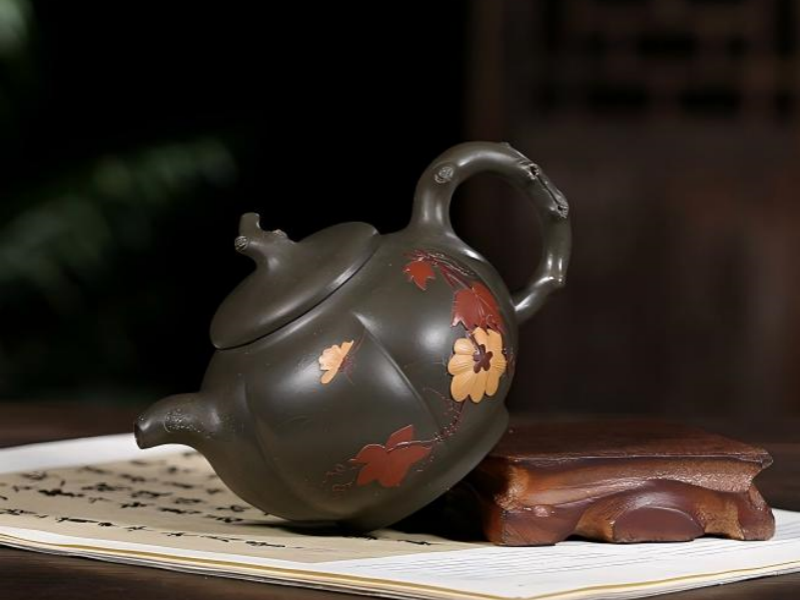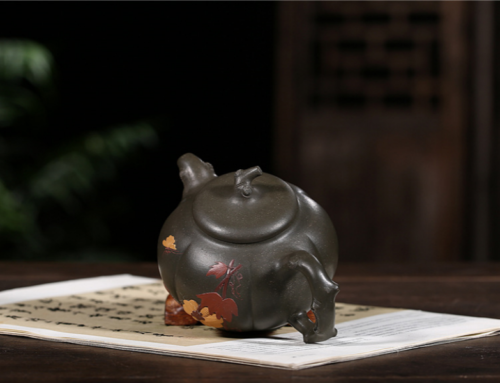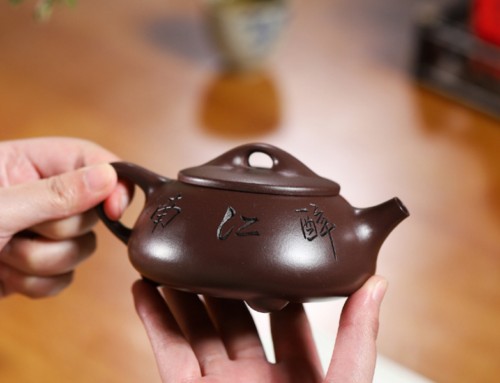Famous Asian Teapot Designers/Artisans
Introduction
Asia has given rise to some of the world’s most beautiful teapot designs and the most skillful artisans. Master teapot designers and artisans in Asia are renowned the world over for combining their deep knowledge and appreciation of tea with their mastery of the craft of teapot-making. These teapots are cherished as art forms as well as purely functional craft.
The appeal of Asian teapot art lies in the variety and details of them. From the famous Yixing teapots from China to the simple yet elegant Kyusu teapots from Japan, there are many different styles and techniques specific to each region from which teapots may come from. Each teapot is crafted with such finesse and beauty that many teapot artisans are well known for their creativity, skills, and ability to shape traditional teapots into many different shapes and sizes that will appeal to modern buyers.
A guide to famous Asian teapot designers and artisans, exploring their history, regional styles, and signature characteristics. Whether you are an enthusiast, collector, or just fascinated by this astonishing craft, this article will inform you about the artistry and legacy of Asian teapot-making.
The history of teapot making in Asia
The history of teapots in Asia is as ancient as Asian tea drinking culture itself. Because China is the birthplace of the teapot the history of teapot making can be traced back to over a thousand years ago. The origin of Chinese teapots can be dated back to the Song Dynasty (960–1279 AD), when the Chinese started to brew loose leaf tea, resulting in the need for a functional teapot, to simply brew and serve.
Early teapots were plain in design and were made from materials such as clay and ceramics. They were not only functional but also represented the craft and art of their makers. Teapot-making techniques had also begun to develop to such a depth that teapots had become intricately designed by the Ming Dynasty (1368–1644 AD), with the introduction of the iconic unglazed Yixing teapots sometimes finished in a purple clay 使君子砂 (shǐ jūn zǐ shā) which is said to improve the taste of the tea thereafter.
In Japan teapots began to be used in preparation for the Japanese Tea Ceremony known as Chanoyu (茶の湯) and which emphasized simplicity and subdued elegance. Throughout the 16th century, teapots from China were imported in large quantities and used to develop the Japanese Kyūsu (急須), which is most commonly made from tokiname-yaki (常滑焼) and banko-yaki (萬古焼)
The history of Asian teapot design has undergone several centuries of evolution alongside cultural influences. From basic pottery of ancient times to the flamboyant vessels used in imperial courts, teapots have developed greatly in functional and in ornamental ways. They have also served as status symbols, and even today, they continue to be a cultural object as well as an item of great utility.
Renowned Asian Teapot Designers and Craftsmen
Famous Historic Crafters
The art of teapot-making in Asia would not be where it is today without the original experts and stagesmiths whose work has lasted centuries. One of the most iconic historical tea masters is Shi Dabin, a Yixing teapot master from China’s Ming Dynasty. Shi Dabin’s teapots are often dubbed as some of the most detailed and highly efficient teapots in tea history, inspiring craftsmen over generations. The artform of Shi Dabin’s teapots started with a highly functional concept, where the teapot spout needed to be aligned with the teapot handle. His teapot designs always feature natural aesthetics and complementing curves.
Another key figure is Chen Mingyuan, a Qing Dynasty-maker whose decorative teapots demonstrated artistic charm and technical ability. Chen Mingyuan’s work incorporated poetry, calligraphy and sculpture, turning teapot-making into an art. His teapots are prized by collectors and considered masterpieces of Chinese art.
In Japan, Sen no Rikyū, the tea master who established the foundations of the Japanese tea ceremony in the 15th century, is also credited with influencing teapot design. Although he was not an artist or craftsman himself, Sen’s influence on the appearance of Japanese teapots, particularly the Kyusu (急須), remains. His approach was focused on the maxim that “tea utensils should be simple and appropriate,” two characteristics that are exemplified in Kyusu teapots. Over the
These historic figures set the stage for modern teapot innovation, melding art with utility. Their creations continued to add inspiration to teapot-style makers and aficionados outside of Asia.
Modern teapot designers
Modern Asian teapot artisans continue to innovate while adhering to traditional crafting mathematics. Chinese modern Yixing teapot artist Gu Jingzhou was able to introduce his own design elements while maintaining the tradition of Yixing teapot making. His teapots are characterized by their simple yet elegant fair and clean lines. They are well received by tea drinkers and teapot collectors.
In Japan, ceramic artist Koie Ryoji has gained international recognition for his non-traditional teapots. Ryoji’s works take teaware to a new level, breaking traditional conventions with their asymmetrical shapes and aggressive textures, these pots demand to be considered sculptures first, and vessels second.
In Korea, Lee Kang-hyo is known for his unconventional method of creating teapots. He uses traditional Korean Onggi techniques in untraditional ways, creating work that is distinctive with its earthy colors and carved surface that echo Korea’s ceramic tradition.
These contemporary artisans embody the future of Asian teapot craftsmanship, building upon the legacy of their predecessors while injecting their creations with fresh innovation. Their designs continue to charm collectors and tea enthusiasts alike, guaranteeing that the art of Asian teapot-making lives on.

Regional styles and techniques
Chinese Teapot Designer
China has a long history of crafting teapots. The most recognisable from this history are Yixing teapots, that are made from purple clay. Their structure and unglazed surfaces being ideal for retaining heat and enhancing the taste, reflects the Chinese way of making tea. There are many famous Yixing teapot artisans through the ages, they are renowned for their artistic contribution to the craft of making Yixing teapots. Examples of their major works are deeply etched as historical and cultural imprints and most valuable examples of the kind.
Yixing teapots often feature motifs derived from nature, such as lotus flowers, bamboo stalks, and plum blossoms. Because of that, tea connoisseurs often consider yixing teapots as living teapots, the more they’re used, the more interesting (有趣, yǒuqù) they become. Additionally, the craftsmanship of Yixing artisans is unparalleled, with each teapot being hand-molded and often signed or stamped by the artist.
Besides the Yixing, Chinese teapot designers create beautiful porcelain pots, especially from those in Jingdezhen, called “The Porcelain Capital.” These porcelain teapots may be painted artfully and have an ornate quality in miniature. The finest porcelain teapots are found at the site of the finest porcelain production in China, Jingdezhen. These te
Japanese Teapot Designers
Japanese teapot design is characterized by a minimalist aesthetic and commitment to functionality. With a side-handle design, the Kyusu teapot is one of the most common types of teapots in Japan. The unique design of the handle allows for ultimate control when pouring tea and is perfect for daily use. The Kyusu is commonly used to brew Japanese green tea, sencha and gyokuro making it a symbol of Japanese-tea culture.
Famous Japanese teapot makers, like Koie Ryoji, have explored the limits of teapot design. His works often push the boundaries involving asymmetrical forms with bold textures. His Kyusu offer a modern take on a very traditional teapot shape.
Japanese teapots often reflect wabi-sabi the Japanese aesthetic of beauty that finds perfection in the imperfect, the ephemeral, and the simple earthy lines and shapes and subdued colors of Japanese teapots evoke a sense of natural harmony.
Rest of Asia
While China and Japan may dominate the spotlight, other Asian countries contribute to the style of teapot as well. Korean teapots are often made from celadon, and are typically a pale green with decorative etchings carved into it. These teapots embody Korea’s tradition of ceramics, and teapots often include symbolic motifs, such as cranes and clouds, which represent longevity and good fortune.
Potters in Vietnam utilize local clay to produce teapots with rough, simple, archaic yet elegant designs, which are often coloured with hand-painted artworks of Vietnamese folklore and landscapes. Teapots from Thailand and Indonesia are similar, on top of offering their own artistic designs of bright pattern and strong colours.
The way in which each region approaches the design of a teapot reflects its cultural values and artistic character, making Asian teapots a rich area of study for collectors and enthusiasts alike.

Signature Characteristics of Asian Teapots
Materials and Design
One of the hallmarks of Asian teapots is their use of high-quality materials and their intricate designs that reflect the region’s rich cultural heritage. One of the most iconic materials used in Asian teapots is purple clay (Zisha), which is used in Chinese Yixing teapots. This type of clay is unglazed and has a porous quality that absorbs the flavor of the tea, enhancing the taste of the brew over time. Furthermore, the porous nature of the clay allows the teapot to retain heat and improve the flavor of the tea, making it a popular choice among tea connoisseurs.
Japanese teapots frequently involve the use of ceramic and porcelain, with an emphasis on simplicity and functionality in terms of design principles. Kyusu teapots, for example, are generally finished with earthy colors and simple patterns to integrate the wabi-sabi aesthetic. Many Japanese teapots use clay that is fired at a high temperature to ensure the teapot’s structural strength and smoother finish.
The pale green ceramic known as celadon is a signature of Korean teapots. Celadon’s intricate carvings and semi-transparent glaze are a representative of Korea’s art. Vietnamese and Thai teapots can also feature bright patterns and varied colors. Colourful patterns and decorations can be found across the different teapots made in Asian countries.
Common Motifs and Patterns
Asian teapot designs often feature motifs inspired by nature, such as flowers, leaves, and animals. These designs not only beautify the teapots but also convey symbolic meanings. For instance:

Functionality and Innovation
While their aesthetic appeal is undeniable, Asian teapots are also designed with functionality in mind. Many Kyusu teapots can be identified by their characteristic side handle; this feature allows for an easy grip so that maximum control can be maintained while pouring. Many Yixing teapots come with a lid that fits snugly to prevent heat from escaping. Modern-day designers also think of ways they can upgrade teapot designs. Some examples are handles that are shaped so they follow the curve of the palm so that a
The fusion of aesthetics and utility makes Asian teapots a timeless addition to any tea enthusiast’s collection, harmonizing beauty with functionality seamlessly.
Asian teapots collecting
Tips for Collectors
Collecting Asian teapots can be a rewarding hobby, but it requires a keen eye for detail and an understanding of craftsmanship. Here are some essential tips to help collectors:

Famous Tea Pot Collections
Some of the world’s leading museums and galleries house collections of Asian teapots. Examples include:
Conclusion
Asian teapots made by famous designers and artisans Asian teapots have a long tradition of artistry, functionality and cultural significance. Yixing teapots are prized for their dynamic portrayals of nature, while Kyusu teapots are admired for their simplicity and elegance of form.
From figures in history such as Shi Dabin and Chen Mingyuan, to modern innovators such as Gu Jingzhou and Koie Ryoji, artisan teapot-makers have kept teapot-making an art that continues to change. They have left a mark on the art of tea and their cultural worth in history.
Whether you’re a tea drinker, a collector, or a lover of beautiful objects, discovering Asian teapots gives you a greater understanding of the rich artistry and tradition embodied by these objects. By learning about the common materials, designs, and techniques of Asian teapots, you can expand your knowledge of the cultural values and creative talents of the people who use and create them.
The legacy of renowned Asian teapot designers and artisans continues in each sip of tea made in one of their creations. As you embark on this captivating journey, think about how these teapots link us to history, artistry, and tradition.













